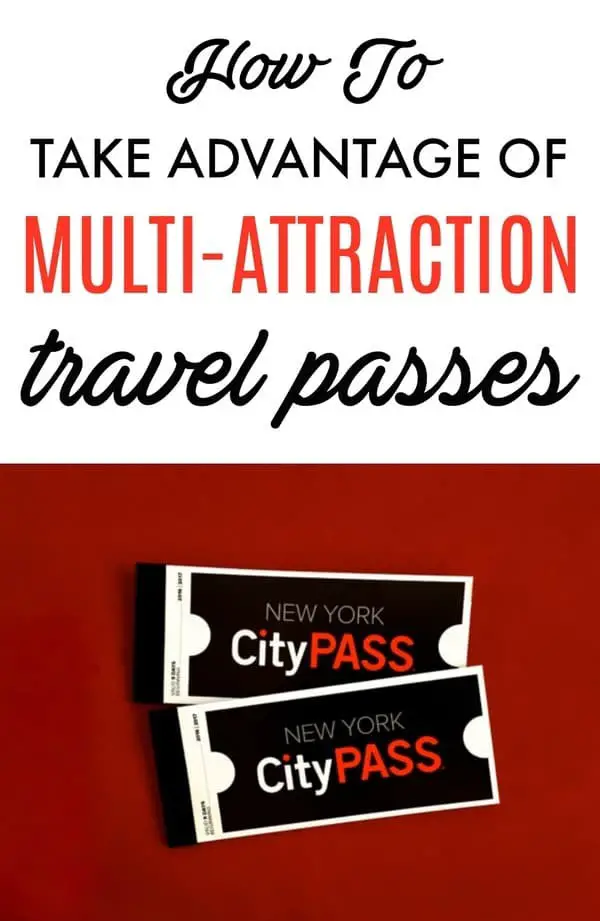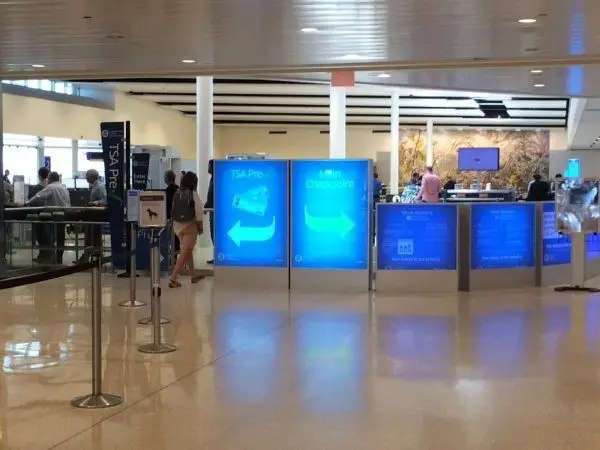
Skip long lines and save on admission to top sights by investing in the right pass.
Note: This post contains affiliate links for which Go to Travel Gal earns a commission to help support the blog if you purchase using the links.
When you’re visiting a city for the first time, it can be overwhelming to decide what attractions to see, when to see them and how to purchase all the tickets you need. Multi-attraction passes can not only help you save some money on admission tickets to top sights, but also reduce the stress of trip planning. This type of sightseeing pass, which is available in many major cities around the world, allows you to purchase discounted tickets to a variety of attractions at once, in some cases slashing more than half off the regular price.
Fly to many of the major cities offering multi-attraction passes for nearly free using Southwest Rapid Rewards points and the Southwest Companion Pass. Find how easy it is to accomplish by downloading my free guide to flying free on Southwest below.
[convertkit form=5025785]
But with a variety of options out there, knowing which passes are best suited for your trip and vacation goals is essential to optimize benefits and savings. Before you invest in multi-attraction passes, read this primer.
Types of Passes
With a selection of multi-attraction passes to choose from, it’s important to think about your trip objectives. Do you want to see as much as you can? Do you want to spread out your sightseeing or squeeze it all into a few days with the rest of the time more relaxed? How long will you be visiting?
There are several reputable companies offering prepaid attraction passes, including CityPASS, Go City Card from Smart Destinations Inc. and Leisure Pass North America LLC, which offers the New York Pass and Philadelphia Pass. The Leisure Pass Group also offers options for many of Europe’s popular cities, such as Paris, London and Dublin. But keep in mind, each attraction pass works a little differently and affords different advantages.
CityPASS offers entry to fewer must-see attractions in each city, such as the Statue of Liberty in New York City, the Museum of Science and Industry in Chicago and the Georgia Aquarium and World of Coca-Cola in Atlanta. Each city has a selection of about four to six attractions per pass and you typically have nine days to use the passes.
Savings average at about 40 percent to 50 percent off full attraction prices. CityPASS costs range from around $50 to $100, with the exception of the Southern California CityPASS, which costs $341 for adults, and includes a three-day Park Hopper ticket to Disneyland and Disney’s California Adventure, a ticket to SeaWorld San Diego and a ticket to LEGOLAND California, yielding a savings of $140 per person. It’s also valid for 14 days, giving you a little more time to fit everything in.
The Go City Card is the most flexible option of the bunch, offering an all-inclusive pass with entry into more than 20 attractions for a choice of one, two, three or five days – and a savings of up to 55 percent. The Go City Card’s Explorer pass, which is good for 30 days, allows you to choose three or five attractions, while their Build Your Own Pass option lets you hand-pick any number of attractions from a long list, making it well-suited for travelers who only want to see a couple of attractions during their trip at a discounted price.
If checking out a variety of attractions is a top priority for you, the New York Pass and the Philadelphia Pass grant access to numerous sights, with more than 80 attractions to choose from in the Big Apple and more than 40 attractions in Philadelphia; however, you are limited to selecting a pass for one, two, three or five days in Philly or one, two, three, five, seven or ten days in New York City. Many European passes work similarly. The Paris Pass, for example, offers access to 60 of the City of Light’s top attractions, including the Notre-Dame Cathedral, the Louvre and the Arc de Triomphe for 44 euros for children, 79 euros for teens and 129 euros for adults (for a two-day pass).
The Upsides
The biggest perk of these passes is the savings they afford. They free up more of your budget to spend on other expenses during your vacation, such as dining and accommodations. Some passes even include discounts on dining and shopping to help travelers trim additional travel costs.
The passes can also be a major time saver, eliminating the wait time required to purchase individual tickets. Many of these passes allow you to skip lines, giving you more time to do other activities. The Omnia Card, for example, which provides access to sites within Vatican City and Rome, grants holders “fast track” entry to the Sistine Chapel, St. Peter’s Basilica and the Coliseum, saving visitors more than four hours of waiting time during peak travel periods. Meanwhile, the Southern California CityPASS offers a “fast pass” entry at Disneyland and Disney’s California Adventure parks just like regular park tickets.
Many multi-attraction passes also include packages with transportation costs rolled in, which can be especially helpful in European cities where public transit may be difficult to navigate. Having the transportation component of your trip included in the pass cost is also helpful if you’re exploring a new city. The New York Pass, for example, includes the Big Bus Tour, which in addition to being a sightseeing tour, lets you hop on and off the bus at many sites across the city, as does the Go London Card. Meanwhile, the Paris Pass gives you unlimited travel on the métro, buses and RER express trains, as does the Omnia card, which gives you unlimited access to Rome’s public transit system.
Mobile accessibility is another added perk of multi-attraction tickets, as many passes are available digitally so all you have to do is open the pass on your mobile device to have it scanned. That’s a few less essential travel documents to keep track of and potentially lose while on the go.
The Downsides
While there are few disadvantages to using these passes, there are several points to consider. Unless you buy a pass that gives you at least five days to spend visiting attractions, you’ll likely find yourself feeling rushed, but taking advantage of transportation options can help you prevent fatigue. On the other hand, many of the passes that are good for longer periods of time limit the number of attractions you can see, and you may find that there are additional sights that you would like to experience. If you opt for this type of pass, consider using tickets for the most expensive attractions and paying out of pocket for other sights on your itinerary to maximize savings.
Planning in advance, and considering factors such as the age of your travel companions, the length of your visit and the typical cost of admission tickets versus multi-attraction passes, will help you determine which option is best for your needs, trip preferences and goals.
This article originally appeared on US News & World Report.
Read More:
Author
-

Lyn Mettler is a longtime travel writer for US News & World Report, USA Today 10Best and The TODAY Show who created Families Fly Free, a program which teaches families her simple system to use travel rewards to fly for free.




